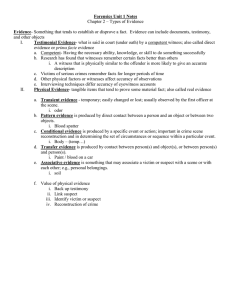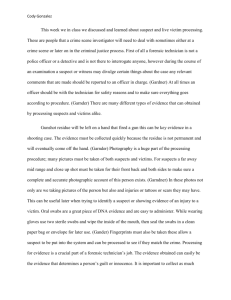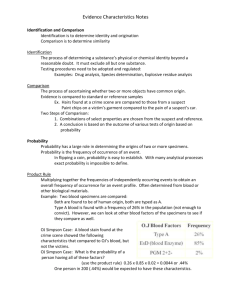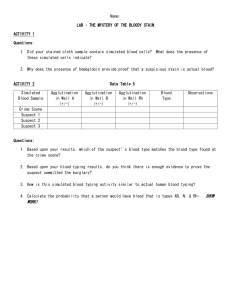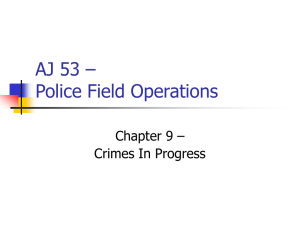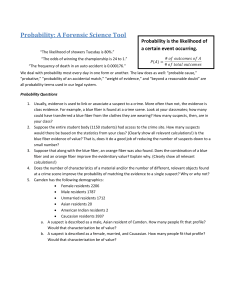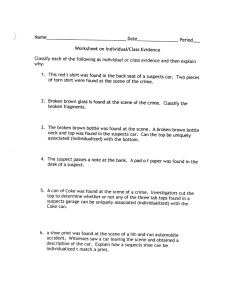Checklist For Preliminary Crime Investigation Arrival At The Scene
advertisement
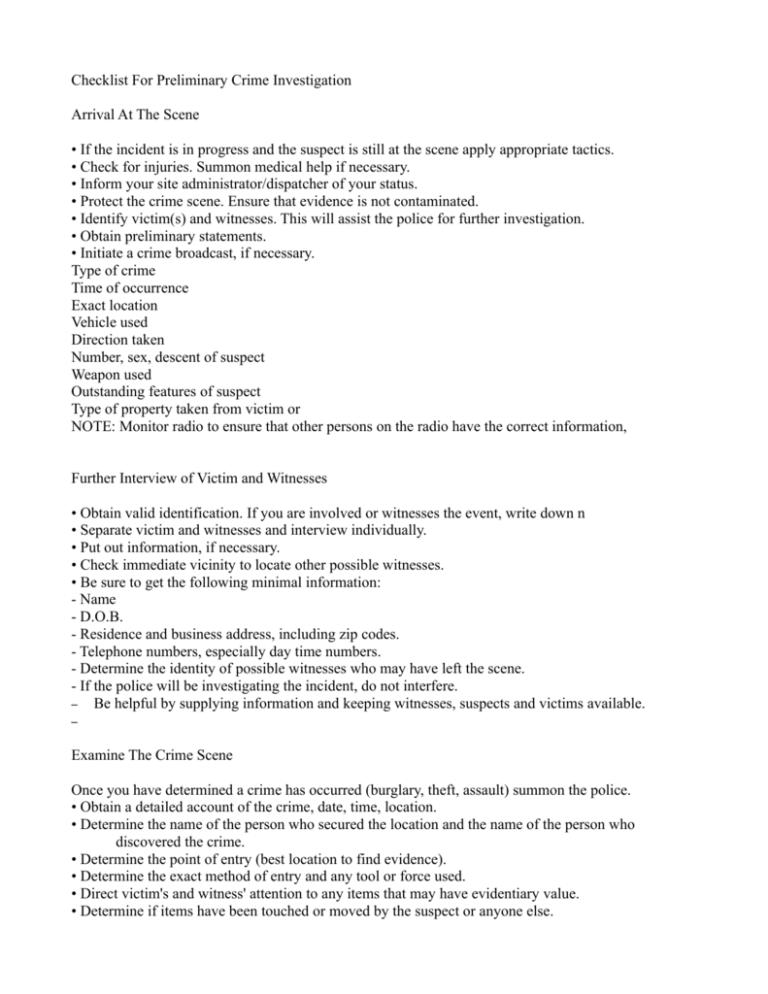
Checklist For Preliminary Crime Investigation Arrival At The Scene • If the incident is in progress and the suspect is still at the scene apply appropriate tactics. • Check for injuries. Summon medical help if necessary. • Inform your site administrator/dispatcher of your status. • Protect the crime scene. Ensure that evidence is not contaminated. • Identify victim(s) and witnesses. This will assist the police for further investigation. • Obtain preliminary statements. • Initiate a crime broadcast, if necessary. Type of crime Time of occurrence Exact location Vehicle used Direction taken Number, sex, descent of suspect Weapon used Outstanding features of suspect Type of property taken from victim or NOTE: Monitor radio to ensure that other persons on the radio have the correct information, Further Interview of Victim and Witnesses • Obtain valid identification. If you are involved or witnesses the event, write down n • Separate victim and witnesses and interview individually. • Put out information, if necessary. • Check immediate vicinity to locate other possible witnesses. • Be sure to get the following minimal information: - Name - D.O.B. - Residence and business address, including zip codes. - Telephone numbers, especially day time numbers. - Determine the identity of possible witnesses who may have left the scene. - If the police will be investigating the incident, do not interfere. – Be helpful by supplying information and keeping witnesses, suspects and victims available. – Examine The Crime Scene Once you have determined a crime has occurred (burglary, theft, assault) summon the police. • Obtain a detailed account of the crime, date, time, location. • Determine the name of the person who secured the location and the name of the person who discovered the crime. • Determine the point of entry (best location to find evidence). • Determine the exact method of entry and any tool or force used. • Direct victim's and witness' attention to any items that may have evidentiary value. • Determine if items have been touched or moved by the suspect or anyone else. • Determine the suspects method of operation. • Examine the point and method of exit. • Examine the exterior of the location. Type of Property Taken • Obtain a complete list including serial numbers and/or distinguishable points of identification. • Determine the monetary value of the property. • You can be of valuable assistance by saving time if you can obtain any information about stolen or damaged property: serial numbers, inventory numbers, brand, color, model andvalue. Evidence • Do not touch or pick up any evidence until the after the police complete their investigation. • Photograph the scene if necessary. • Identify, collect, and preserve evidence. • Tools • Weapons • Discarded clothing • Other items of evidentiary value NOTE: Never place a suspected burglary tool in a tool impression to make a comparison. Suspect Taken Into Custody at the Scene • Record spontaneous statements. • Separate suspects from others. • Do not permit suspect into the crime scene area. If arrested inside the area, remove from the area immediately. • Prevent communication between suspect and others. • Preserve, collect, and book evidence found on suspect's person. • Distinct or unique clothing described by victim or witness. Clothing bearing trace material (blood, dirt, etc.) • Shoes either bearing trace material or if footprints were found at the scene. • Stolen property. • Written material that would connect suspect to the crime. • Any tools used in the crime, or any weapons. • Photograph the suspect if evidence is present; or if there is injury, torn or stained • Clothing or trace evidence.

